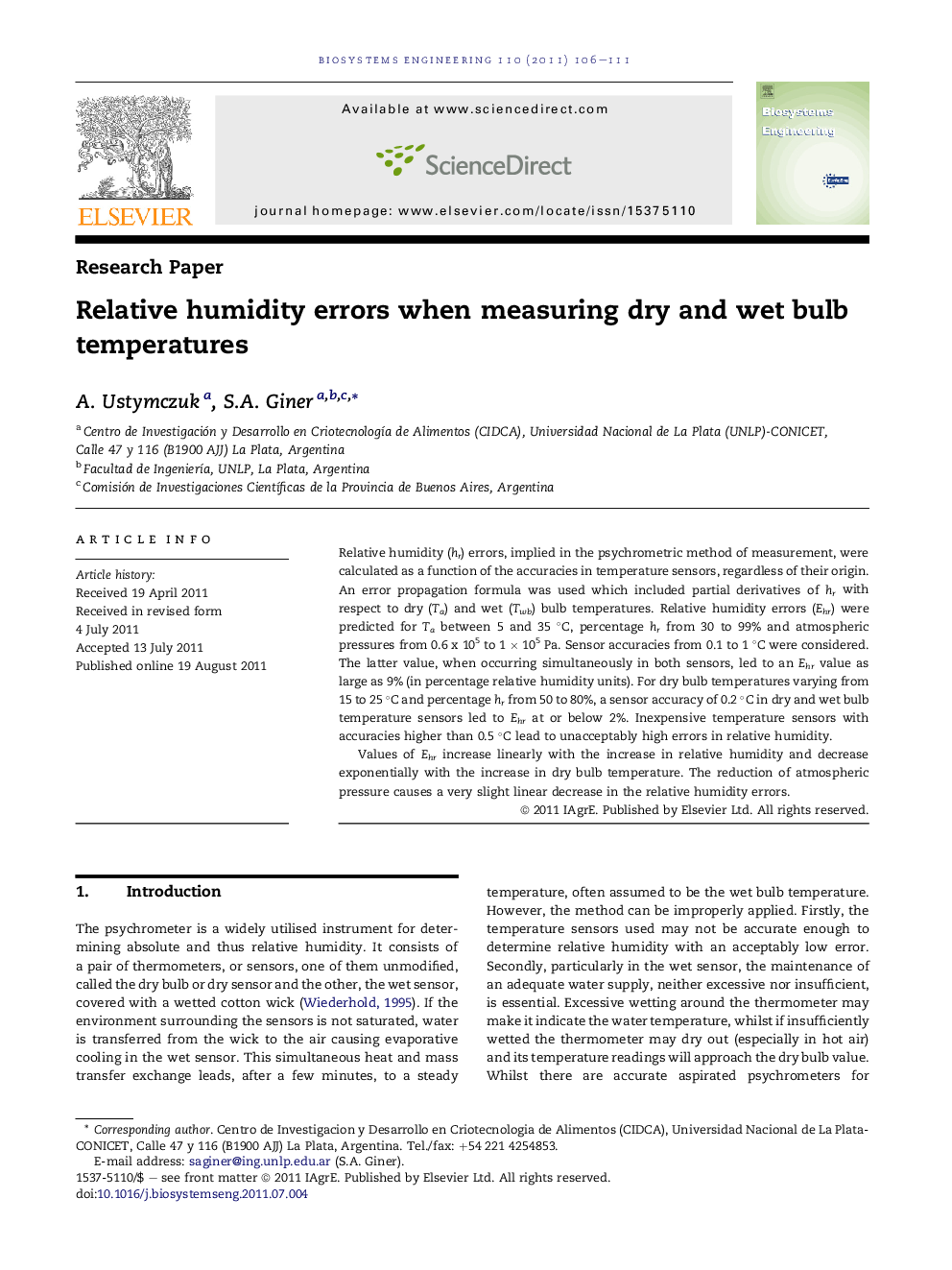| Article ID | Journal | Published Year | Pages | File Type |
|---|---|---|---|---|
| 1711618 | Biosystems Engineering | 2011 | 6 Pages |
Relative humidity (hr) errors, implied in the psychrometric method of measurement, were calculated as a function of the accuracies in temperature sensors, regardless of their origin. An error propagation formula was used which included partial derivatives of hr with respect to dry (Ta) and wet (Twb) bulb temperatures. Relative humidity errors (Ehr) were predicted for Ta between 5 and 35 °C, percentage hr from 30 to 99% and atmospheric pressures from 0.6 x 105 to 1 × 105 Pa. Sensor accuracies from 0.1 to 1 °C were considered. The latter value, when occurring simultaneously in both sensors, led to an Ehr value as large as 9% (in percentage relative humidity units). For dry bulb temperatures varying from 15 to 25 °C and percentage hr from 50 to 80%, a sensor accuracy of 0.2 °C in dry and wet bulb temperature sensors led to Ehr at or below 2%. Inexpensive temperature sensors with accuracies higher than 0.5 °C lead to unacceptably high errors in relative humidity.Values of Ehr increase linearly with the increase in relative humidity and decrease exponentially with the increase in dry bulb temperature. The reduction of atmospheric pressure causes a very slight linear decrease in the relative humidity errors.
► The errors of psychrometry measurement of relative humidity are examined. ► An error propagation formula is used to convert temperature errors into relative humidity errors. ► Relative humidity was found to be very sensitive to temperature errors. ► Results would benefit researchers, engineers, technicians as well as manufacturers.
